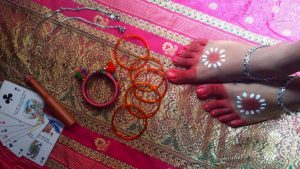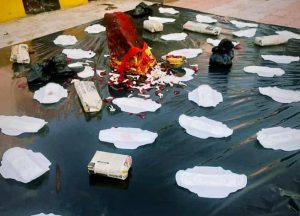Reimagining Raja: Paving the Path to Gender Equality and Breaking Taboos Around Menstruation
Raja in Odisha has long been regarded as a festival that celebrates and honors women progressively. It has been a captivating experience, where the first monsoon rains symbolize the rejuvenation of Mother Earth and the onset of fertility. This celebration goes beyond the Earth, embracing all women and acknowledging their incredible ability to bring forth life.
However, I have begun to experience conflicting emotions regarding Raja. I have come to realize that beneath its surface, this festival is rooted in Hindu traditions that impose certain restrictions on women during menstruation. In subtle yet powerful ways, Raja perpetuates and glorifies the social norms surrounding menstruation, reinforcing the associated stigma. Even Mother Earth herself is subject to these restrictions.
It is clear to me that merely celebrating a biological process does not automatically make Raja a progressive festival. To truly embody progressiveness, Raja should symbolize a departure from outdated customs and rituals. It should become a joyous occasion that marks the end of systemic discrimination and the eradication of peculiar practices. Rather than discriminating against girls for menstruating, Raja should provide them with equal opportunities for education, work, and participation in household chores, including access to the kitchen. The festival should aim to dispel the notion of impurity associated with menstruation and reject the idea that a person becomes impure during this natural process.
The Raja festival is a paradoxical celebration of menstruation, fertility, and womanhood, while simultaneously perpetuating the stigma surrounding these aspects in Indic cultures. During Raja, it is believed that Bhudevi, the revered Mother Earth and wife of Lord Jagannath, undergoes her menstrual cycle during the first three days of the festival. This symbolism extends to the ceremonial bath given to her on the fourth day, symbolizing the onset of fertility.
Ironically, while Raja aims to honor the sacredness of menstruation, it unintentionally reinforces the stigmatization of menstruating women. When a young Odia girl experiences her first menstruation, she is ceremoniously bathed amidst the celebration. However, following this ritual, she is expected to retreat to a secluded room, where she must rest in seclusion for the duration of her menstrual period. It is only upon completing her period that she takes a fresh bath on the soil, symbolizing a symbolic cleansing.
Similarly, on the final day of the festival, known as Basumati Snana, a puja is performed early in the day. A turmeric paste is applied to the grinding stone, symbolizing Mother Earth, which is then ritually bathed. While this ritual is intended to honor and seek blessings from the Earth for a prosperous harvest, it inadvertently reinforces the belief that menstruation and the associated purification process are necessary to remove impurities. Just as menstruating women face societal taboos and exclusion from certain activities, the goddess, in her symbolic menstruation, is also subjected to limitations.
While the Raja festival embraces the celebration of womanhood, it simultaneously reinforces the stigmatization of menstruation. The parallel drawn between the Earth’s menstrual cycle and that of women can be seen as a reflection of the prevailing cultural norms and beliefs surrounding menstruation. By associating menstruation with restrictions and seclusion, the festival unknowingly contributes to these societal norms. This dichotomy calls for reflection and reevaluation of the practices surrounding menstruation, aiming to promote empowerment, inclusivity, and the rejection of discriminatory beliefs.
As we strive for progress and gender equality, it is crucial to reimagine and redefine the Raja festival to align with our evolving values. By challenging the existing norms and addressing the stigmatization of menstruation, we can transform Raja into a symbol of empowerment, inclusivity, and respect for women.
Shedding the shackles of outdated customs, Raja should become a platform for celebrating the beauty and strength of womanhood, free from discrimination or taboos associated with menstruation. It should be an occasion where girls are encouraged to embrace their bodies and aspirations, with equal opportunities for education, work, and active participation in all aspects of life.
To achieve this, the festival must break away from the notion of impurity tied to menstruation. Instead, it should promote a holistic understanding of this natural process, highlighting the power of creation and renewal. By doing so, Raja can challenge societal perceptions and pave the way for open discussions and education about menstrual health and hygiene.
Let us reimagine Raja as a festival that not only celebrates the onset of fertility but also fosters a nurturing environment for all women. It should be a time of joy, unity, and progress, where we dismantle the barriers of discrimination and embrace the diversity and strength of womanhood.
In our pursuit of gender equality and social progress, let us seize the opportunity to transform Raja into a symbol of empowerment, breaking free from the confines of tradition and embracing a future where all women are celebrated, respected, and given equal opportunities to thrive.

Comments are closed.